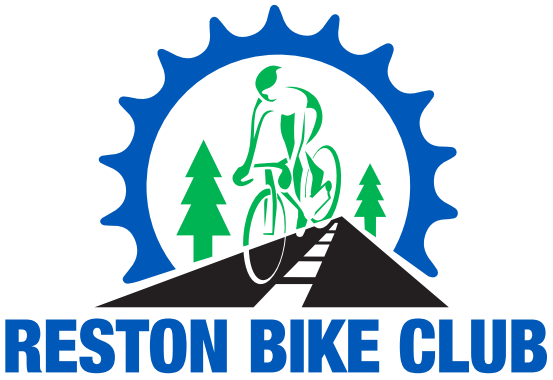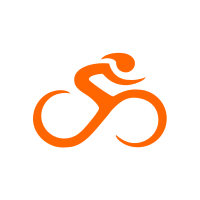RIDE SAFE / RIDE FUN GUIDELINES
RIDE PREPARATION CHECKLIST
Cyclists need to maximize their conspicuity at twilight, at night, and under reduced visibility conditions including fog, overcast, and heavy shade. Cyclists need to wear retro-reflective clothing, use reflective materials on the bicycle, and use front and rear lights.
Clothing Selection: The list below illustrates colors from least to most visible at a distance of 500 feet (the required distance set by VDOT. Clothing should include retro-reflective material when riding during low visibility conditions.
- GRAY: Least visible - tends to blend well with asphalt, road surface and can be near invisible at twilight in urban and rural environments
- BLACK: Visible in bright sunlight but visibility diminishes quickly under overcast skies, in shade, and during twilight.
- WHITE: Surprising but white blends well in urban settings and become nearly invisible at twilight and in come settings
- DARK COLORS: Blue, Red Green, Purple, etc. are okay close-up, but drop in visibility at 500 feet
- LIGHT COLORS: Yellow, Lime Green, Pink, Orange, etc. are visible in daylight but provide no significant advantage after dark
- ULTRA-HIGH VIS COLORS: Bright Yellow, Bright Lime Green, and International Orange are very visible in daylight, but provide no significant advantage after dark unless they are made with retro-reflective material
Choose a front light that is at least 150 lumens but do not use the strobe mode when riding in a group. It blinds the rider who turns around to look at traffic and it’s annoying. A slow pulse improves conspicuity without being blinding or annoying. Some lights come with amber side-lights. These improve conspicuity at intersections where it really matters.
The taillight also needs to be bright enough to be seen over 500 feet away and flashing or pulsing is preferred. 50 lumens brightness is sufficient for a red taillight. But, don’t go too bright or use a taillight with a white strobe when riding in a group. You don’t want to blind the rider three feet behind you.
The most dangerous time of day for low conspicuity is twilight – the hour before sundown and after sunup. This is when the sun angle is low to the horizon. In the evening it blinds drivers looking toward the West and creates long dark shadows for drivers looking toward the East. This is why we highly recommend using a headlight and taillight during reduced visibility conditions including twilight, fog, and heavily shaded areas.
WEAR A HELMET | Wear a CPSC certified helmet. Helmets should be replaced every 5 years or if they've been dropped (even if damage is not obvious). Multi-Directional Impact Protection System (MIPS) or Angular Impact Migration (AIM) technology helmets are recommended. |
IN CASE OF EMERGENCY | Install ROAD ID or a similar product on your mobile phone lock screen (free to download) and/or on your person. Include emergency contacts and critical medial information. If under 18 years of age, have a parent sign the permission slip. If under 15 years of age, a parent must ride with the rider. |
OTHER PREPARATION RECOMMENDATIONS |
|
RIDE SITE CHECK-IN
- Select the correct group to match your ability. Sprinting ahead or dropping behind are not good group riding practices. If you cannot maintain the stated pace for the entire ride, you should ride with a slower speed group until you are able to confidently ride with a faster group for the entire distance. The group designated average speed is meant to provide an enjoyable pace for all.
- Sign in with the Group Ride Leader
- If you choose to use our electronic cue sheet, wear one earphone for Ride with GPS turn-by-turn instructions. Two earphones are against Virginia Law. No music, radio, or phone calls on group rides
- Recommend turning on rear light at the start and front light at twilight (1 hour before sunset)
RIDE GUIDELINES
BE PREDICTABLE
Ride a steady pace and avoid sudden movements. Make your intentions clear to everyone on the road with verbal cues and hand prompts. Signal to turn and check behind you well before turning or changing lanes. Look for, and pass on, audible and hand prompts.
- Per Virginia Law, single up when: A car approaches from the rear to pass and there is insufficient room for a passing vehicle and when traffic is moving faster than the cyclist
- Ride Straight: Ride in a straight line, do not swerve between parked cars and stay outside the door zone of parked cars (three feet). Never overlap wheels, ride three abreast, or ride on the aero-bars while in the group
- Use Pre-Defined Route: Stay on the RBC designated route for any RBC sponsored ride. Some riders join mid-route and some take a shortcut to rejoin after a repair. Do no deviate from the route unless safety is a concern. RBC routes are published on our website and are available for download as PDF cue sheets or as Ride with GPS maps with audio and visual turn-by-turn instructions
- Establish Group Size: If more than 15 riders sign up for a group ride, consider dividing into two or more sub-groups. Crash probability is lower for smaller groups than for larger groups.
- Decide Pacelines at the Start: It’s okay to use a single rotating paceline if the group agrees. However, the Ride Leader must ensure everyone understands the ground rules before the ride. In addition, the ride leaders must help judge that the group has the necessary skills and experience to paceline safely. The front rider position should not pull the group to a faster pace and should rotate out frequently. Signal you are going out of the front position with your elbow extended. When riding on public roads, always exit to your left.
- Lane positioning: 2-4 ft. from pavement edge is nominal. Move left and take the lane when turning left but never cross solid lines. Alert other riders to your presence when passing; announce “on your left, passing on your left”. This longer chirp creates a doppler-like sound shift that helps the rider being passed to read your speed and presence.
- Queueing: Queue into a single traffic lane at a stop sign or traffic light; don't filter forward along the right or among vehicles. Never drift into the right turn lane if you are going straight through the intersection.
- Stopping: If you have to leave the ride for a mechanical or other issue, get completely off the pavement when you stop. This applies to roadways and trails such as the W&OD. Never block or hinder traffic.
- Following Too Close: A cyclist can be cited for following too close to a motor vehicle. Following too closely can result in a $250 fine and 4 points normally, and, a $500 fine if committed in a Highway Safety Corridor.
- Pass on Prompts: Talk to each other on the ride in the interest of group safety. When you hear a prompt, relay it backward or forward. No one is exempt from relaying prompts. Use hand gesture and audible prompts. Club standard prompts include:
- “Stopping” (closed fist behind your back) to signal your intent to riders behind you. Pass it back.
- “Slowing” (open hand low behind the back). Pass it back.
- “Move left” (wave to left with right hand behind your back) to the person behind you to pass someone on the trail or move around a parked car or hazard on the road. Pass it back.
- "Passing on your left." Spoken when passing another cyclist in your group or passing a pedestrian on a multi-use trail (W&OD). Never pass on the right.
- “Bike up!” Spoken when the leader sees an unexpected condition or steep downhill road condition ahead or oncoming bike traffic on a trail. Be on the brake handles when you hear this prompt. Pass it back.
- “Car Back” Single-up and don’t pass anyone until the car behind has passed. Pass it forward.
- “Single-up” When a car is behind the group, waiting to pass or when the group speed is slower that the speed of the traffic.
- “Take the lane” Used to signal riders in front of you that you have moved to the center of the lane for improved visibility to drivers or moved to the left lane safely for a left turn and it is safe for them to move left in front of you. Pass it forward.
- “Clear” Used for intersections as a verbal cue to the rider behind you, but never use another’s cue as your only reason to feel safe. Each rider is responsible for his or her own safety.
BE RESPECTFUL | Respect motorists, pedestrians, and fellow cyclists. Do not exceed the intended pace of the ride. Call out poor rider behavior such as bullying, shouting, harassment, or VDOT or RBC rule/guideline infringement. Follow the guidance of the Ride Leader. |
IN CASE OF EMERGENCY |
|



